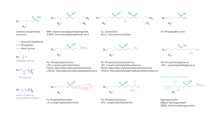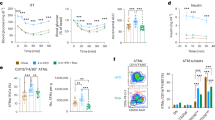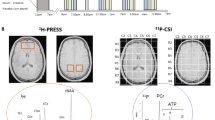Abstract
Brown adipose tissue is specialized for non-shivering thermogenesis, combining lipolysis with an extremely active mitochondrial electron transport chain and a unique regulated uncoupling protein, UCP1, allowing unrestricted respiration. Current excitement focuses on the presence of brown adipose tissue in humans and the possibility that it may contribute to diet-induced thermogenesis, countering obesity and obesity-related disease as well as protecting cardio-metabolic health. In common with other tissues displaying a high, variable respiration, the tissue possesses a creatine pool and mitochondrial and cytosolic creatine kinase isoforms. Genetic and pharmacological manipulation of these components have pleiotropic effects that appear to influence diet- and cold-induced metabolism in vivo and modeled in vitro. These findings have been used to advance the concept of a UCP1-independent diet-induced thermogenic mechanism based on a dissipative hydrolysis of phosphocreatine in beige and brown adipose tissue. Here we review the in vivo and in vitro experimental basis for this hypothesis, and explore alternative explanations. We conclude that there is currently no convincing evidence for a significant futile creatine cycle in these tissues.
This is a preview of subscription content, access via your institution
Access options
Access Nature and 54 other Nature Portfolio journals
Get Nature+, our best-value online-access subscription
$29.99 / 30 days
cancel any time
Subscribe to this journal
Receive 12 digital issues and online access to articles
$119.00 per year
only $9.92 per issue
Buy this article
- Purchase on Springer Link
- Instant access to full article PDF
Prices may be subject to local taxes which are calculated during checkout


Similar content being viewed by others
References
Nicholls, D. G. Mitochondrial proton leaks and uncoupling proteins. Biochim. Biophys. Acta Bioenerg. 1862, 148428 (2021). A review of UCP1, from the intact adipocyte to the isolated protein.
Nedergaard, J. & Cannon, B. Diet-induced thermogenesis: principles and pitfalls. Methods Mol. Biol. 2448, 177–202 (2022).
Kazak, L. et al. A creatine-driven substrate cycle enhances energy expenditure and thermogenesis in beige fat. Cell 163, 643–655 (2015). The initial proposal for a futile creatine cycle in beige adipose tissue.
Roesler, A. & Kazak, L. UCP1-independent thermogenesis. Biochem. J. 477, 709–725 (2020).
Himms-Hagen, J. Regulation of metabolic processes in brown adipose tissue in relation to nonshivering thermogenesis. Adv. Enzym. Regul. 8, 131–151 (1970).
Foster, D. O. & Frydman, M. L. Nonshivering thermogenesis in the rat. II. Measurements of blood flow with microspheres point to brown adipose tissue as the dominant site of the calorigenesis induced by noradrenaline. Can. J. Physiol. Pharmacol. 56, 110–122 (1978).
Lindberg, O., de, P. J., Rylander, E. & Afzelius, B. A. Studies of the mitochondrial energy-transfer system of brown adipose tissue. J. Cell Biol. 34, 293–310 (1967).
Rafael, J., Ludolph, H.-J. & Hohorst, H.-J. Mitochondria from brown adipose tissue: uncoupling of oxidative phosphorylation by long chain fatty acids and recoupling by guanine triphosphate. Hoppe Seylers Z. Physiol. Chem. 350, 1121–1131 (1969).
Nicholls, D. G., Grav, H. J. & Lindberg, O. Mitochondria from brown adipose tissue: regulation of respiration in vitro by variations in volume of the matrix compartment. Eur. J. Biochem. 31, 526–533 (1972).
Nicholls, D. G. & Lindberg, O. Brown adipose tissue mitochondria: the influence of albumin and nucleotides on passive ion permeabilities. Eur. J. Biochem. 37, 523–530 (1973).
Mitchell, P. & Moyle, J. Chemiosmotic hypothesis of oxidative phosphorylation. Nature 213, 137–139 (1967).
Nicholls, D. G. The influence of respiration and ATP hydrolysis on the proton electrochemical potential gradient across the inner membrane of rat liver mitochondria as determined by ion distribution. Eur. J. Biochem. 50, 305–315 (1974).
Nicholls, D. G. Hamster brown adipose tissue mitochondria: the control of respiration and the proton electrochemical potential by possible physiological effectors of the proton conductance of the inner membrane. Eur. J. Biochem. 49, 573–583 (1974).
Cunningham, S. A., Wiesinger, H. & Nicholls, D. G. Quantification of fatty acid activation of the uncoupling protein in brown adipocytes and mitochondria from the guinea-pig. Eur. J. Biochem. 157, 415–420 (1986).
Nicholls, D. G. Hamster brown adipose tissue mitochondria: purine nucleotide control of the ionic conductance of the inner membrane, the nature of the nucleotide-binding site. Eur. J. Biochem. 62, 223–228 (1976).
Heaton, G. M., Wagenvoord, R. J., Kemp, A. & Nicholls, D. G. Brown adipose tissue mitochondria: photoaffinity labelling of the regulatory site for energy dissipation. Eur. J. Biochem. 82, 515–521 (1978).
Crichton, P. G., Lee, Y. & Kunji, E. R. The molecular features of uncoupling protein 1 support a conventional mitochondrial carrier-like mechanism. Biochimie 134, 35–50 (2017).
Rafael, J. & Heldt, H. W. Binding of guanine nucleotides to the outer surface of the inner membrane of guinea-pig brown fat mitochondria in correlation with the thermogenic capacity of the tissue. FEBS Lett. 63, 304–308 (1976).
Cannon, B. & Nedergaard, J. Brown adipose tissue: function and physiological significance. Physiol. Rev. 84, 277–359 (2004).
Rafael, J., Fesser, W. & Nicholls, D. G. Cold-adaptation in the guinea-pig at the level of the isolated brown adipocyte. Am. J. Physiol. 250, C228–C235 (1986).
Rial, E. & Nicholls, D. G. The mitochondrial uncoupling protein from guinea-pig brown adipose tissue: synchronous increase in structural and functional parameters during cold-adaptation. Biochem. J. 222, 685–693 (1984).
Locke, R. M., Rial, E. & Nicholls, D. G. The acute regulation of mitochondrial proton conductance in cells and mitochondria from the brown fat of cold-adapted and warm-adapted guinea pigs. Eur. J. Biochem. 129, 381–387 (1982).
Jansky, L. et al. Interspecies differences in cold adaptation and nonshivering thermogenesis. Fed. Proc. 28, 1053–1058 (1969).
Cannon, B. Control of fatty-acid oxidation in brown-adipose-tissue mitochondria. Eur. J. Biochem. 23, 125–135 (1971).
Nicholls, D. G. & Locke, R. M. Thermogenic mechanisms in brown fat. Physiol. Rev. 64, 1–64 (1984).
Virtanen, K. A. et al. Functional brown adipose tissue in healthy adults. N. Engl. J. Med. 360, 1518–1525 (2009).
Fischer, A. W. et al. Intact innervation is essential for diet-induced recruitment of brown adipose tissue. Am. J. Physiol. 316, E487–E503 (2019).
Wang, H. et al. Uncoupling protein-1 expression does not protect mice from diet-induced obesity. Am. J. Physiol. 320, E333–E345 (2021).
Rothwell, N. J. & Stock, M. J. A role for brown adipose tissue in diet-induced thermogenesis. Nature 281, 31–35 (1979).
Kozak, L. P. Brown fat and the myth of diet-induced thermogenesis. Cell Metab. 11, 263–267 (2010).
Hussain, M. F., Roesler, A. & Kazak, L. Regulation of adipocyte thermogenesis: mechanisms controlling obesity. FEBS J. 287, 3370–3385 (2020).
Enerback, S. et al. Mice lacking mitochondrial uncoupling protein are cold-sensitive but not obese. Nature 387, 90–94 (1997).
Kazak, L. et al. UCP1 deficiency causes brown fat respiratory chain depletion and sensitizes mitochondria to calcium overload-induced dysfunction. Proc. Natl Acad. Sci. USA 114, 7981–7986 (2017).
Feldmann, H. M., Golozoubova, V., Cannon, B. & Nedergaard, J. UCP1 ablation induces obesity and abolishes diet-induced thermogenesis in mice exempt from thermal stress by living at thermoneutrality. Cell Metab. 9, 203–209 (2009).
Matthias, A. et al. Thermogenic responses in brown fat cells are fully UCP1-dependent. UCP2 or UCP3 do not substitute for UCP1 in adrenergically or fatty acid-induced thermogenesis. J. Biol. Chem. 275, 25073–25081 (2000).
Nedergaard, J. et al. Life without UCPI: mitochondrial, cellular and organismal characteristics of the UCPI-ablated mice. Biochem. Soc. Trans. 29, 756–763 (2001).
Golozoubova, V., Cannon, B. & Nedergaard, J. UCP1 is essential for adaptive adrenergic nonshivering thermogenesis. Am. J. Physiol. 291, E350–E357 (2006).
Hofmann, W. E. et al. Effects of genetic background on thermoregulation and fatty acid-induced uncoupling of mitochondria in UCP1-deficient mice. J. Biol. Chem. 276, 12460–12465 (2001).
Meyer, C. W. et al. Adaptive thermogenesis and thermal conductance in wild-type and UCP1-KO mice. Am. J. Physiol. 299, R1396–R1406 (2010).
Chouchani, E. T., Kazak, L. & Spiegelman, B. M. New advances in adaptive thermogenesis: UCP1 and beyond. Cell Metab. 29, 27–37 (2019).
Bertholet, A. M. et al. Mitochondrial patch clamp of beige adipocytes reveals UCP1-positive and UCP1-negative cells both exhibiting futile creatine cycling. Cell Metab. 25, 811–822 (2017).
Rahbani, J. F. et al. Creatine kinase B controls futile creatine cycling in thermogenic fat. Nature 590, 480–485 (2021). Creatine kinase B is proposed to be the mitochondria-associated isoform for FCC.
Sun, Y. et al. Mitochondrial TNAP controls thermogenesis by hydrolysis of phosphocreatine. Nature 593, 580–585 (2021). Tissue non-specific alkaline phosphatase is proposed to be the mitochondria-associated phosphocreatine phosphatase.
Greenhill, C. Obesity: role for creatine metabolism in energy expenditure. Nat. Rev. Endocrinol. 13, 624 (2017).
Wallimann, T. et al. Intracellular compartmentation, structure and function of creatine kinase isoenzymes in tissues with high and fluctuating energy demands: the ‘phosphocreatine circuit’ for cellular energy homeostasis. Biochem. J. 281, 21–40 (1992).
Wallimann, T., Tokarska-Schlattner, M. & Schlattner, U. The creatine kinase system and pleiotropic effects of creatine. Amino Acids 40, 1271–1296 (2011).
Pollard, A. E. et al. AMPK activation protects against diet induced obesity through Ucp1-independent thermogenesis in subcutaneous white adipose tissue. Nat. Metab. 1, 340–349 (2019).
Kuiper, J. W., Oerlemans, F. T., Fransen, J. A. & Wieringa, B. Creatine kinase B deficient neurons exhibit an increased fraction of motile mitochondria. BMC Neurosci. 9, 73 (2008).
Streijger, F. et al. Mice lacking brain-type creatine kinase activity show defective thermoregulation. Physiol. Behav. 97, 76–86 (2009).
Kazak, L. et al. Genetic depletion of adipocyte creatine metabolism inhibits diet-induced thermogenesis and drives obesity. Cell Metab. 26, 693 (2017).
Berlet, H. H., Bonsmann, I. & Birringer, H. Occurrence of free creatine, phosphocreatine and creatine phosphokinase in adipose tissue. Biochim. Biophys. Acta 437, 166–174 (1976).
Cannon, B. & Vogel, G. The mitochondrial ATPase of brown adipose tissue. Purification and comparison with the mitochondrial ATPase from beef heart. FEBS Lett. 76, 284–289 (1977).
Maqdasy, S. et al. Impaired phosphocreatine metabolism in white adipocytes promotes inflammation. Nat. Metab. 4, 190–202 (2022).
Bournat, J. C. & Brown, C. W. Mitochondrial dysfunction in obesity. Curr. Opin. Endocrinol. Diabetes Obes. 17, 446–452 (2010).
Connell, N. J. et al. No evidence for brown adipose tissue activation after creatine supplementation in adult vegetarians. Nat. Metab. 3, 107–117 (2021).
Song, A. et al. Low- and high-thermogenic brown adipocyte subpopulations coexist in murine adipose tissue. J. Clin. Invest. 130, 247–257 (2020).
Schottl, T. et al. Limited mitochondrial capacity of visceral versus subcutaneous white adipocytes in male C57BL/6N mice. Endocrinology 156, 923–933 (2015).
Shabalina, I. G. et al. UCP1 in brite/beige adipose tissue mitochondria is functionally thermogenic. Cell Rep. 5, 1196–1203 (2013).
Houstek, J. et al. The expression of subunit c correlates with and thus may limit the biosynthesis of the mitochondrial F0F1-ATPase in brown adipose tissue. J. Biol. Chem. 270, 7689–7694 (1995).
Nicholls, D. G. & Bernson, V. S. M. Inter-relationships between proton electrochemical gradient, adenine nucleotide phosphorylation potential and respiration during substrate-level and oxidative phosphorylation by mitochondria from brown adipose tissue of cold-adapted guinea-pigs. Eur. J. Biochem. 75, 601–612 (1977).
Nicholls, D. G., Shepherd, D. & Garland, P. B. A continuous recording technique for the measurement of carbon dioxide, and its application to mitochondrial oxidation and decarboxylation reactions. Biochem. J. 103, 677–691 (1967).
Held, N. M. et al. Pyruvate dehydrogenase complex plays a central role in brown adipocyte energy expenditure and fuel utilization during short-term beta-adrenergic activation. Sci. Rep. 8, 9562 (2018).
Briolay, A., Bessueille, L. & Magne, D. TNAP: a new multitask enzyme in energy metabolism. Int. J. Mol. Sci. 22, 10470 (2021).
Rahbani, J. F., Chouchani, E. T., Spiegelman, B. M. & Kazak, L. Measurement of futile creatine cycling using respirometry. Methods Mol. Biol. 2448, 141–153 (2022). Adetailed description of the mitochondrial FCC assay.
Lawson, J. W. & Veech, R. L. Effects of pH and free Mg2+ on the Keq of the creatine kinase reaction and other phosphate hydrolyses and phosphate transfer reactions. J. Biol. Chem. 254, 6528–6537 (1979).
Mookerjee, S. A., Gerencser, A. A., Nicholls, D. G. & Brand, M. D. Quantifying rates, pathways and flexibility of intracellular ATP production and consumption using extracellular flux measurements. J. Biol. Chem. 292, 7189–7207 (2017).
Matsushima, K. et al. Comparison of kinetic constants of creatine kinase isoforms. Int. J. Biol. Macromol. 38, 83–88 (2006).
Basson, C. T., Grace, A. M. & Roberts, R. Enzyme kinetics of a highly purified mitochondrial creatine kinase in comparison with cytosolic forms. Mol. Cell. Biochem. 67, 151–159 (1985).
Author information
Authors and Affiliations
Contributions
D. N. and M. B. jointly conceived and wrote the manuscript.
Corresponding author
Ethics declarations
Competing interests
The authors declare no competing interests.
Peer review
Peer review information
Nature Metabolism thanks Uwe Schlattner and the other, anonymous, reviewer(s) for their contribution to the peer review of this work. Primary handling editor: Isabella Samuelson.
Additional information
Publisher’s note Springer Nature remains neutral with regard to jurisdictional claims in published maps and institutional affiliations.
Rights and permissions
Springer Nature or its licensor (e.g. a society or other partner) holds exclusive rights to this article under a publishing agreement with the author(s) or other rightsholder(s); author self-archiving of the accepted manuscript version of this article is solely governed by the terms of such publishing agreement and applicable law.
About this article
Cite this article
Nicholls, D.G., Brand, M.D. A critical assessment of the role of creatine in brown adipose tissue thermogenesis. Nat Metab 5, 21–28 (2023). https://doi.org/10.1038/s42255-022-00718-2
Received:
Accepted:
Published:
Issue Date:
DOI: https://doi.org/10.1038/s42255-022-00718-2
This article is cited by
-
Futile lipid cycling: from biochemistry to physiology
Nature Metabolism (2024)
-
Skeletal muscle, not adipose tissue, mediates cold-induced metabolic benefits
Nature Metabolism (2023)



